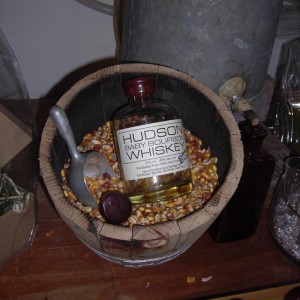A blog’s blog
I told Richard (and myself) that I was going to take a few weeks off from the blog while me and the missus move house. However, I’ve been tooling around the other whisk(e)y blogs and this week has been awash with controversy. Once again the topic of rating legitimacy has reared its ugly head. It seems to have started with a somewhat rant-like post by our friend . Like the rest of us, the good Dr. has noticed the explosion of whisky blogs (including ours) over the past 18 months. If only we moved as fast as we talked, we would have beat the boom. Dr. Whisky’s rant, fueled by disappointments in his own contributions as much as others, was mostly a call for some sort of worldwide database that catalogued all of our tasting recommendations into one source (he suggests a Rotten Tomatoes type of format). While Dr. Whisky’s heart was in the right place, it seems he inadvertently stepped on a few toes creating some lively commentary. It also prompted a fairly eloquent statement from Jeff at Scotch Hobbyist. While we have said much the same here (including the gentle nudge at Jim Murray), Jeff sums it up quite nicely. Jeff’s blog name says it all; he’s a hobbyist. That’s why we are “apostles” and not experts. We are proselytizing about whisk(e)y because we love it and think you should too.
The other bit of controversy came from one of my new favorites (the folks behind the increasingly popular “Say What!?” series). When Jason posted preliminary tasting notes of Washington state’s Ellensburg Distillery’s inaugural release (not Jason’s personal notes mind). He got some flack from an anonymous commenter for his negativity. I don’t know if it was a sense of guilt or the plan all along, but Jason did a more extensive tasting of Ellensburg (with multiple tasters). I’m afraid the results were not what the anonymous commenter was hoping for. I’m glad Anonymous posted his/her rebuttal to the first post. It is good to have opposing views. Although, I question whether it was the distiller since they failed to identify themselves and spoke rather positively. We encourage people to rebut our findings. We’ve been repeatedly called down for our dislike of traditional Canadian whiskeys, so chin up Jason.
Both of these issues are really the same thing. We all have different tastes. If you get six of us together, you’ll probably get seven opinions (especially if I’m in the group). I’m all for lively discussion, but we need to have thicker skins if we are going to maintain a semi-public lifestyle. I am a little proud of our community though. We have yet to sink to kind of douchery that seems to plague the online community. For the most part, we play nice.
On a semi-related note, I’d like to talk about microdistilling in America for a moment. If you will indulge me to quote myself, I commented on WHISKYhost’s Ellensburg post thusly: “Honestly, the only first release I’ve really enjoyed is the rye from Finger Lakes. Everyone else started off pretty rough (to varying degrees) and are quickly getting better.” It’s true. Tuthilltown, Stranahan, and Wasmund all keep getting better and I’ve heard that the stuff coming out of Death’s Door is improving. It’s bound to happen.
While at a press event a few months ago, I was privy to a conversation about spirits writers in America. The tone was decidedly uncomplimentary. To paraphrase: The problem with spirits writers in America is that they are all self-taught amateurs, they lack the education and training of European spirits writers. Needless to say, I threw up in my mouth a little. How is this relevant? Well, what can be said about American spirits writers can also be applied to micro-distillers. In Scotland, the majority of Master Distillers have advanced degrees is the sciences behind distilling and undergo years of apprenticeship. Most American micro-distillers are brewers or moon-shiners with an interest in making whiskey (many of them “self-taught amateurs”). So give these guys a break and help them find their legs. These are the guys that will change the industry and blow your mind. Just give them time.
Drink well, drink responsibly.
Matt


